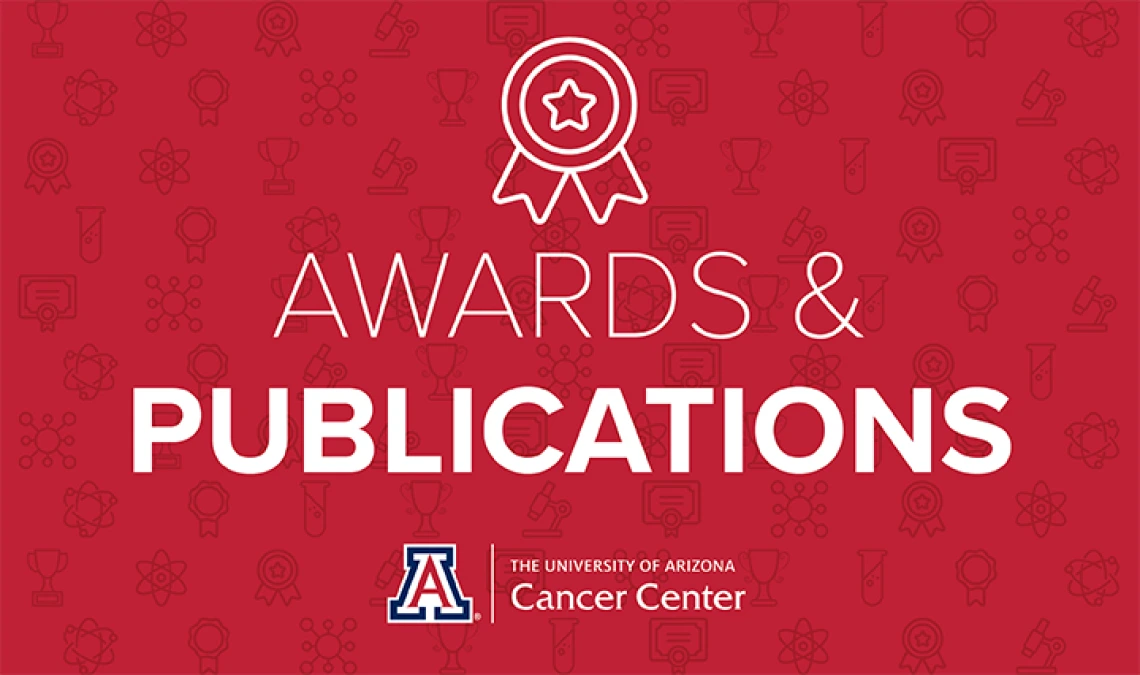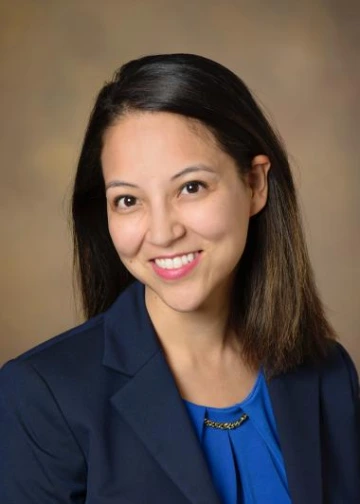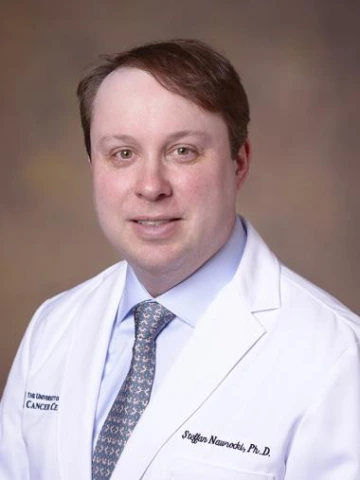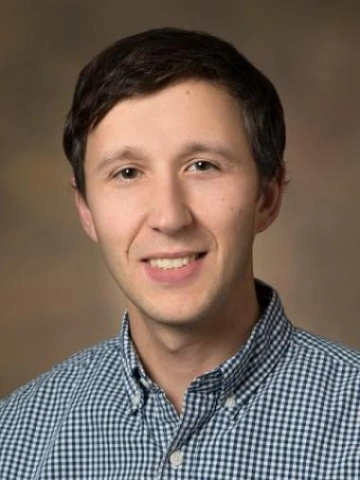UArizona Cancer Center Awards & Publications (June 2021)
Finding Tomorrow’s Treatments, Today

Awards Update: June 2021 (Pilot Awards)
Long before a clinical trial is designed or a new standard of care is approved to treat cancer patients, researchers are hard at work in laboratories in search of the next big discovery. The challenge for these researchers is not thinking of novel concepts, rather it is acquiring funding to conduct new research today that could save lives tomorrow.
The University of Arizona Cancer Center encourages this type of bold thinking from its researchers. One way of doing this is by allocating pilot awards to promising research proposals that may lack preliminary data, a prerequisite for most significant federal grants. A $50,000 seed fund can help a basic scientist start up a project to begin collecting preliminary data. If the data is promising after a year, additional funding may be provided to advance the early research, or the researcher may be able to apply for a larger grant from a federal agency, such as the National Cancer Institute.
“These seed funds are for high-risk, high-reward research that focus on the priorities of the UArizona Cancer Center,” said Joann Sweasy, PhD, the Nancy C. and Craig M. Berge Endowed Chair and Cancer Center director. “When our researchers can use these funding mechanisms to bolster external grant applications, we see it as a return on our investment.”
Below are several of the projects and researchers that Dr. Sweasy and the Cancer Center leadership selected for funding this year.

Jefferey L. Burgess, MD, MPH, MS
Jefferey L. Burgess, MD
Cancer Prevention & Control Program
Melissa Furlong, PhD
Assistant Professor, Mel & Enid Zuckerman College of Public Health
Project Title: Metabolomic approaches to assess cancer signatures in firefighters
Funding: $50,000 (one year)
Project Research: Drs. Burgess and Furlong will utilize new technology to better assess how environmental contaminants may pose a heightened risk to firefighters for developing certain cancers, such as kidney and prostate. While this elevated risk for firefighters is assumed to be partly environmental, the specific environmental risk factors that contribute are largely unknown. Previous efforts have focused on evaluating exposure to specific environmental contaminants that might be contributing to this

Melissa Furlong, PhD
risk, although this research likely has been overlooking many environmental contributors by only targeting certain contaminants. The new proposed research project relies on metabolomics to use an untargeted approach, where the researcher measures the differences in several hundred metabolites in firefighters, before and after fires. The UArizona recently invested heavily in new technological resources to make metabolomics research feasible for researchers. Drs. Burgess and Furlong will apply this technology to identify which specific contaminants firefighters are exposed to, and to evaluate whether cancer-specific metabolite pathways are activated after a fire.
This will help to answer the question of how these fire exposures are contributing to cancers, and whether researchers can also use these signatures to study the effectiveness of potential interventions and prevention strategies.
Dr. Burgess Says: “There are several potential implications of this research for preventing and curing cancer. One, by identifying the specific contaminants that firefighters are exposed to during fires, we can help build effective PPE to guard against such factors, and even contribute to policy regulations around hazardous chemicals that are allowed in everyday materials. Second, by evaluating the overlap in metabolomic pathways for firefighters and cancer patients, we can contribute to the development of potential early-cancer screening and detection, which has important implications for treatment outcomes. Third, through understanding the mechanisms involved in increased cancer risks in firefighters, we may be able to develop and test preventive interventions.”
Dr. Furlong Says: “The next step is to expand metabolomic measurement to other sites and exposures such as to wildland-urban interface fires, evaluate longer-term contributions to epigenomics and micro RNA. We could also evaluate the effectiveness of some preventative measures, like PPE and sanitary practices, as well as other interventions like the use of nutraceuticals and healthy lifestyles in preventing environmentally-induced metabolomic alterations.”

Steffan Nawrocki, PhD
Steffan Nawrocki, PhD
Clinical and Translational Oncology Program
Project Title: BATF2 stimulation primes acute myeloid leukemia cells for immune checkpoint inhibitor therapy
Funding: $50,000 (one year)
Project Research: Acute myeloid leukemia (AML) is one of the most prevalent and aggressive forms of leukemia. While AML can occur in all ages, the disease primarily affects the elderly with a median age of diagnosis at 68. Currently utilized therapies do not achieve long-term benefit, which underscores the need to develop more effective and less toxic therapies for patients with AML. New immunotherapeutic agents enhance anti-cancer immunity, but have not demonstrated significant activity against AML or other hematological malignancies. A gene called BATF2 is a key tumor suppressor that is absent in AML and its deficiency promotes immune escape of cancer cells. Immune priming strategies that are able to turn “immune cold” cancers to “immune hot” may render them more susceptible to immunotherapeutic approaches. Reolysin (Pelareorep) is a proprietary clinical formulation of oncolytic reovirus, a naturally occurring virus that preferentially replicates in cancer cells, but not in normal tissue. Importantly, Reolysin has been investigated in over 30 adult clinical trials and is very well tolerated when given alone and in combination with chemotherapy. Dr. Nawrocki and his lab recently discovered that Reolysin has dramatic immune priming effects in clinically relevant models of AML that includes potent induction of BATF2. They are investigating whether Reolysin can be used as a precision agent to sensitize AML cells to immunotherapy.
Dr. Nawrocki Says: “Our major goal is to establish the mechanistic underpinnings of a novel, precision immune-based treatment strategy that can be rapidly translated into a clinical trial for patients with AML.”

Noel A. Warfel, PhD
Noel A. Warfel, PhD
Cancer Biology Program
Justin E. Wilson, PhD
Cancer Biology Program
Project Title: Identifying mechanisms controlling tumor-associated macrophage recruitment and polarization in hypoxia
Funding: $50,000 (one year)
Project Research: The researchers recently identified PIM1 kinase as an important driver of macrophage recruitment and survival. Macrophages are a type of white blood cell that surrounds and kills microorganisms, removes dead cells, and can stimulates tumor growth and alter the action of other immune system cells. PIM kinases are commonly overexpressed in many types of cancer. Preliminary data supporting this research project indicate that cancer cells overexpressing PIM1 significantly increase immune cell

Justin E. Wilson, PhD
invasion and the secretion of chemokines that could recruit macrophages. Clinically-available PIM kinase inhibitors significantly reduced the number of tumor-associated macrophages in xenograft models of prostate and colon cancer. Based on these findings, the researchers propose that increased PIM1 expression in tumor cells enhances the secretion of cytokines that recruit tumor-associated macrophages and promote tumor growth.
Dr. Warfel Says: “In the future, our research will expand our understanding of the mechanisms by which cancer cells use to evade our immune system and actually cause immune cells to contribute to tumor progression. We hope that this research will lead to an effective therapeutic strategy using PIM kinase inhibitors as well as the identification of new targets that will improve immunotherapy and patient outcome.”
Dr. Wilson Says: “One of our aims is to develop new treatment strategies combining PIM kinase inhibitors with approved targeted and immunotherapies to determine whether they act synergistically to stop cancer progression. PIM inhibitors have been developed and have already been tested for safety in humans, so if successful, this work could be rapidly translated to a clinical trial.”



